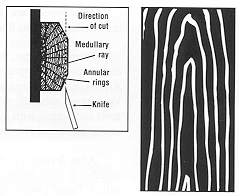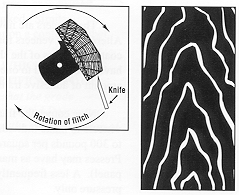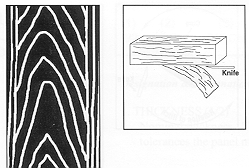There are a number of different ways in which hardwood veneer may be cut from the log. Depending on the manner in which a log is cut, strikingly different visual effects can be achieved with the wood's grain and characteristics. This is the beauty of working with hardwood veneer - that two logs of the same species, cut in different ways, produce distinctive, individual veneers! The most commonly used veneer cutting methods are rotary cutting and plain slicing.






